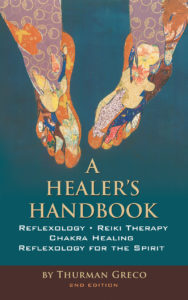The First Step in a Reflexology Session – Part 2
In the last post, we discussed welcoming your client partner into your healing space, gaining trust, and offering essential oils. We’re now going to begin the healing process.
Remove the socks. Cover the feet with a towel. Rotate the ankles 4 or 5 times clockwise and then counterclockwise. This ankle rotation will tell you much about the person’s physical, mental, and spiritual health. As you develop your practice, you may find other things that have more meaning for you than the ankle rotation. For now, try the ankle rotations and see how they help give insight into your client partner’s needs.
Observe the skin.
Look for: hard skin, dry flaky skin, cuts, odor, pigmentation, color (red, yellow, pink, white, orange). Are there skin cracks, crevices, swelling, calluses, corns, sores, flaking? Where are your findings located? There are references to all of these things throughout the blog/book.
Hard skin and thickened skin patches represent places in a person’s life where extra protection is needed. Toenails will thicken up when protection is needed.
Hard cracked skin areas represent places where there are issues. An example of this is cracked heels. When you see this, you’re looking at a person with issues concerning core values. Other times it can be disease. If you see hardened skin over the thyroid area of the foot, for example, you’re probably looking at a thyroid imbalance.
The color of the feet reflects your client’s emotional and spiritual situation at the moment. White feet represent a totally stressed out person.
Red reflects anger. Sometimes, if a foot or part of a foot is red and hot, there’s a recent injury. The red heat is the blood rushing to the injury to carry off the toxins generated by the injury. This is a good thing.
Orange feet represent a person who is totally disgusted and may be experiencing a variety of emotions.
Blue and purple places on the feet represent the bruises (or may actually be the bruises) that s/he is dealing with in life.
If the total foot is not a particular color but the color is coming through in spots or places, note what these places reflex to. For example, if a person has white places on the feet in the area of the heart, you’re dealing with a client who is completely stressed out over a “love” issue.
Beyond the skin, examine the foot. Note bunions, hammertoes, flat feet, swollen feet and ankles, deformed or unhealthy nails.
Not only is it important to notice all the things on the feet and ankles, but it’s important to note where these things are.
We’ll finish the “first step” in the next post. I hope you found this helpful. Please leave your comments below and check out the other posts.
As always, this post comes to you from my Woodstock healing space.
Peace and food for all.
Thurman Greco






